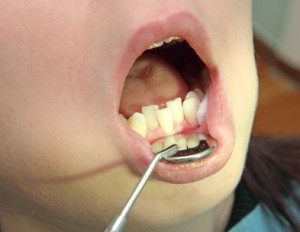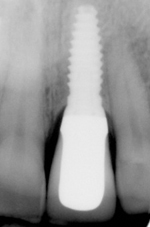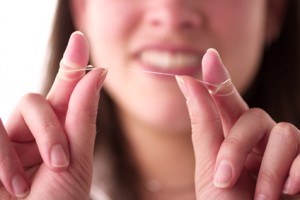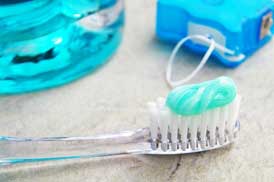 It’s the same scenario, you get to the dentist, sit in the chair and try and remain calm. But, as you look around at the various instruments all you can think is how each of them makes you want to throw up… literally. This brings me to today’s post: Dentistry and Gag Reflex.
In dentistry there are various things that can stimulate a gag response. Most severe gagger’s are swarmed with anxiety before and during their appointment. Some is towards the actual dental procedure but, most is due to the fear that they will start to gag and be unable to control it. As a dentist we try and alleviate those fears and manage the response as best as possible.
Gagging can be defined as a response ” In which the body attempts to eliminate instruments or agents from the oral cavity by muscle contraction at the base or the tongue and the pharyngeal wall”. Various things can cause this response whether it be from physical stimulation or psychological stimulation. With psychological stimulation certain sounds, smells and even thoughts can induce feelings of fear and stress thereby trigger a gag reflex. When I treat a patient with a sensitive gag reflex there are some methods I use to try and manage the symptoms.
It’s the same scenario, you get to the dentist, sit in the chair and try and remain calm. But, as you look around at the various instruments all you can think is how each of them makes you want to throw up… literally. This brings me to today’s post: Dentistry and Gag Reflex.
In dentistry there are various things that can stimulate a gag response. Most severe gagger’s are swarmed with anxiety before and during their appointment. Some is towards the actual dental procedure but, most is due to the fear that they will start to gag and be unable to control it. As a dentist we try and alleviate those fears and manage the response as best as possible.
Gagging can be defined as a response ” In which the body attempts to eliminate instruments or agents from the oral cavity by muscle contraction at the base or the tongue and the pharyngeal wall”. Various things can cause this response whether it be from physical stimulation or psychological stimulation. With psychological stimulation certain sounds, smells and even thoughts can induce feelings of fear and stress thereby trigger a gag reflex. When I treat a patient with a sensitive gag reflex there are some methods I use to try and manage the symptoms.
- Initially, I focus on methods of desensitization combined with relaxation. To do this a topical anesthetic is placed on the palate and back of the mouth. Then, I have the patient find a focal point, such as a corner or a tile. Once a focal point is found breathing exercises are employed. We focus on keeping a steady pace of deep slow breaths while the procedure is completed.
- If this fails we move to a distraction technique. During the procedure the patient is instructed to lift one leg slowly up and then down. They are told to alternate their legs while focusing on breathing slow deep breaths. As silly as this seems, it tends to work well with a mild gag reflex.
- If coping mechanisms do not work in conjunction with topical anesthetic then, pharmacological techniques will be offered if the patient is a candidate. Nitrous oxide is the first pharmacological intervention that is used. Nitrous is helpful for patients because it tends to distract as well as remove some of the anxiety of the dental procedure and the possibility of gagging. However, If the nitrous oxide is not effective then a different type of pharmacological treatment may be recommended such as Conscious Sedation. Conscious Sedation helps to reduce the anxiety associated with treatment as well as help to eliminate the physical reflex as well.
- Other therapies that are used by some practitioners are: acupressure and acupuncture


 What is the cost of a dental implant? Why is there such a variation in fees for dental implants? Are the advertisements I see for $499 dental implants too good to be true? When trying to figure out what the appropriate fee for a dental implant should be one should know exactly
What is the cost of a dental implant? Why is there such a variation in fees for dental implants? Are the advertisements I see for $499 dental implants too good to be true? When trying to figure out what the appropriate fee for a dental implant should be one should know exactly 
 The basics:
Generally there are two types of floss: Rope and Tape. They are either waxed or un-waxed.
Tape: a flat string usually made of a smooth material: this is the type of floss that we recommend the most due to the ease of use between tight teeth and teeth with a lot of restorative work such as fillings and crowns.
Rope: this is usually a braided or round string or rope that can be covered in wax or not, depending on your preference. I tend to avoid this type of floss due to the difficulty of use. Often times if you have tightly contacting teeth this type tends to fray or break more often than a tape will.
Specialty floss and floss threaders: There are a series of flosses and floss threaders that are made specifically to be used around bridge work and braces. Super Floss is a brand that I recommend often for patients because it is a thick and spongy floss with a flexible plastic end that is relatively easy to use underneath bridgework and around orthodontic brackets.
Dental Flossers: these are small plastic handles with floss attached at the end, most often a rope type of floss. My opinion on floss threaders is, if you find that you can not or will not use any other type of floss then they can be used. But I rarely recommend them since you lack the ability to maneuver them around the teeth appropriately and can do a little damage to the gums if the patient is not careful when using them.
Water pics and Air flossers: these are electric tools similar to an electric tooth brush that either use air or water to force debris out from in between teeth and out from under restorative work. My opinion on these tools is that while I believe that they have improved water pics and air flossers immensely in the past few years, they are an adjunct to the use of regular floss. The use of regular dental floss is still the gold standard.]]>
The basics:
Generally there are two types of floss: Rope and Tape. They are either waxed or un-waxed.
Tape: a flat string usually made of a smooth material: this is the type of floss that we recommend the most due to the ease of use between tight teeth and teeth with a lot of restorative work such as fillings and crowns.
Rope: this is usually a braided or round string or rope that can be covered in wax or not, depending on your preference. I tend to avoid this type of floss due to the difficulty of use. Often times if you have tightly contacting teeth this type tends to fray or break more often than a tape will.
Specialty floss and floss threaders: There are a series of flosses and floss threaders that are made specifically to be used around bridge work and braces. Super Floss is a brand that I recommend often for patients because it is a thick and spongy floss with a flexible plastic end that is relatively easy to use underneath bridgework and around orthodontic brackets.
Dental Flossers: these are small plastic handles with floss attached at the end, most often a rope type of floss. My opinion on floss threaders is, if you find that you can not or will not use any other type of floss then they can be used. But I rarely recommend them since you lack the ability to maneuver them around the teeth appropriately and can do a little damage to the gums if the patient is not careful when using them.
Water pics and Air flossers: these are electric tools similar to an electric tooth brush that either use air or water to force debris out from in between teeth and out from under restorative work. My opinion on these tools is that while I believe that they have improved water pics and air flossers immensely in the past few years, they are an adjunct to the use of regular floss. The use of regular dental floss is still the gold standard.]]> 



 The studies were spurred on by the increase in consumption of sports and energy drinks, especially by adolescents. The study warned that both sports drinks and energy drinks have pH levels that are at a level of acidity that can cause demineralization or weakening of the enamel. Also, they found that they both contain citric acid, included to help improve the taste and shelf life of the drink, which can also have an effect on enamel. The study showed, that although both sports and energy drinks are acidic enough that if excessively consumed they can cause damage to dental enamel, energy drinks have a “significantly greater potential for enamel dissolution than sports drinks”.
The study also brought to light some interesting information:
The studies were spurred on by the increase in consumption of sports and energy drinks, especially by adolescents. The study warned that both sports drinks and energy drinks have pH levels that are at a level of acidity that can cause demineralization or weakening of the enamel. Also, they found that they both contain citric acid, included to help improve the taste and shelf life of the drink, which can also have an effect on enamel. The study showed, that although both sports and energy drinks are acidic enough that if excessively consumed they can cause damage to dental enamel, energy drinks have a “significantly greater potential for enamel dissolution than sports drinks”.
The study also brought to light some interesting information: